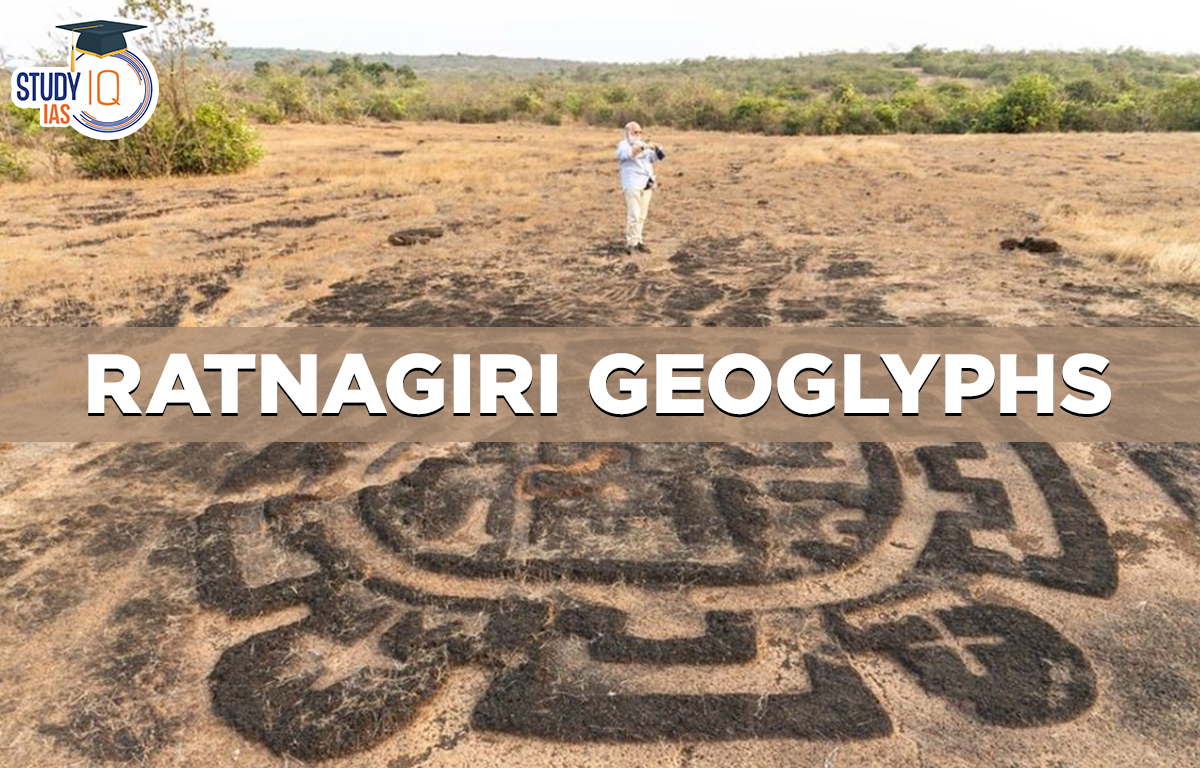Table of Contents
Context: Historical experts have warned that the proposed refinery in Ratnagiri might damage prehistoric geoglyphs found in the area.
About Ratnagiri Geoglyphs
- These historical sites in the Konkan region were added to a tentative list of UNESCO’s world heritage sites and are protected by the state archaeology department and the Archaeological Survey of India (ASI).
- While UNESCO dates these sites to be over 12,000 years old, some experts have claimed that these sites might go as far back as 20,000 years.
- The Barsu-Solgaon site for construction of refinery, which was selected after Nanar site faced opposition, is nearby the geoglyphs.

What are Geoglyphs?
- Geoglyphs are a form of prehistoric rock art, made on the surface of laterite plateaus. They are created by removing a part of the rock surface through an incision, picking, carving or abrading.
- Geoglyphs can be in the form of rock paintings, etchings, cup marks and ring marks. Sometimes the term petroglyph (“rock symbol/character”) is also used.
- According to the UNESCO listing, petroglyphs and geoglyphs share similarities as both require the skills of removing parts or engraving a symbol on the rock surface.
Rock Art
- Rock art is defined as drawing, painting, or similar work on or of stone, usually from the ancient or prehistoric era.
- Rock art includes pictographs (drawings or paintings), engravings (incised motifs), petroglyphs (carvings or inscriptions), petroforms (rocks laid out in patterns), and geoglyphs (ground drawings).
Ratnagiri’s Prehistoric Geoglyphs
- Clusters of geoglyphs are found across the Konkan coastline in Maharashtra and Goa. They were created on Porous laterite rock, which is found on a large scale across the entire region.
- Ratnagiri district has more than 1,500 pieces of such art, known as “Katal shilpa,” spread across 70 sites. UNESCO’s tentative world heritage list mentions seven famous sites— Ukshi, Jambharun, Kasheli, Rundhe Tali, Devihsol, Barsu and Devache Gothane.
- Other sites include Kudopi village in Sindhudurg district and nine sites at Phansamal in Goa.
- Significance: Ratnagiri’s rock art is evidence of the continued existence of human settlements in the region from the Mesolithic (middle stone age) to the early historic era.
- The geoglyphs also show the existence of certain types of fauna that no longer exist in the region today.
- They are examples of advanced artistic skills, showing the evolution of techniques of etching and scooping in rock art.
Themes of Ratnagiri Geoglyphs
- Imagery from these sites shows how people adapted to ephemeral wetlands in a dry-arid plateau having shallow rock pools, streams and watercourses.
- The figures depicted in the geoglyphs include humans and animals such as deer, elephant, tiger, monkey, wild boar, rhinoceros, hippopotamus, cattle, pig, rabbit, and monkey.
- High number of reptilian and amphibian creatures such as tortoises and alligators, aquatic animals such as sharks and sting rays, and birds like peacocks can be found in the geoglyphs.
- Some clusters have one or two standalone figures of larger-than-life scale, while others show multiple figures gathered together, for a purpose or ritual.
Ratnagiri Refinery
- The refinery at Barsu-Solgaon was earlier proposed to be set up at Nanar in the same district but was scrapped owing to opposition by locals.
- The Nanar refinery was proposed as a joint venture between multiple companies. Partners in the project included Indian Oil, Hindustan Petroleum, Bharat Petroleum and Saudi-owned Aramco along with United Arab Emirates’ National Oil Company.
- Effects on the Geoglyphs: If the refinery project starts at the presently proposed site in Barsu, the rock carvings will get destroyed due to construction and chemical reaction at the site.


 Air Pollution in India, Causes, Effects,...
Air Pollution in India, Causes, Effects,...
 Daily Quiz 03 April 2025
Daily Quiz 03 April 2025
 List of National Symbols of India with N...
List of National Symbols of India with N...





















